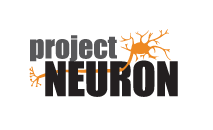What makes honey bees work together? How genes and environment affect behavior

This unit engages students in lessons that explore how genetics and the environment influence animal behavior on scales ranging from gene expression in an individual to evolution of a species. Student learning is facilitated from various genres of text including opinion articles and adapted primary literature, and it also features three interview videos with honey bee researchers. Students do a variety of scientific practices such as analyzing gene expression data and using models of hive thermoregulation as they build knowledge to answer the driving question in a meaningful way.
This unit connects to research done by Dr. Gene Robinson and members of the Robinson Lab group at the University of Illinois.
-
Lesson 1: What do honey bees do?
This lesson introduces students to honey bee behaviors with an opportunity to make observation from video footage. Then students learn about different roles of honey bees described by scientists who research honey bees. The lesson concludes with an article that describes influences on behavior. From this lesson, students start to see that both genes and the environment play a role in determining an organism’s behavior.
Updated in 2015 -
Lesson 2: Why do honey bees have different jobs?
Throughout this lesson students engage in activities that teach them how changes in the environment influence gene expression and thus behavior. First, students learn about different jobs that are carried out by worker bees in the hive. Then students learn about different molecular biology techniques, including insights from scientists who research honey bees. This enables students to analyze real scientific data and delve deeper into the environmental influences on different worker bee behaviors such as nursing and foraging. Finally, the lesson wraps up with a whole-class game called “Swarm!” which consolidates the big ideas of the lesson: bee labor is divided, and it changes due to environmental pressures.Updated in 2015Associated Media: -
Lesson 3: How do honey bees heat the hive?
Lesson 3 explores the influence of the environment on animal behavior and how collective behaviors can modify the environment. In this lesson, students explore how a specific environmental factor, temperature, influences bee behavior. Additionally, they will consider how the concept of homeostasis can be applied to multiple levels of biological organization and how group behavior can be used to modify the environment. Students design and carry out an investigation using a NetLogo honey bee simulation. From the simulation and a reading activity that follows, they collect and organize data and use it to support a scientific claim that addresses the driving question for the unit. By the end of this lesson, students synthesize the concepts of genetic and environmental influences on behavior, and they understand how these two influences interact.
Updated in 2013Associated Media: -
Lesson 4: What is the genetic basis for the evolution of eusocial behaviors?
This lesson addresses the driving question about the origin of eusocial honey bee behavior from a genetic perspective. Students read adapted primary literature in order to learn what categories of gene function have been important in the evolution of eusocial behavior in bees. Then students select and compare a gene across different species and generate a phylogenetic tree using Molecular Evolutionary Genetics Analysis software. Students relate their finding back to the primary literature and make a scientific claim about the gene they selected to study. Students learn that genetics helps explain eusocial honey bee behaviors on an evolutionary scale. Students hear from scientists one more time as they discuss colony collapse disorder and how students can get more involved with honey bees. Lastly, students respond to the unit’s driving question while synthesizing what they have learned throughout the unit.
Updated in 2015

